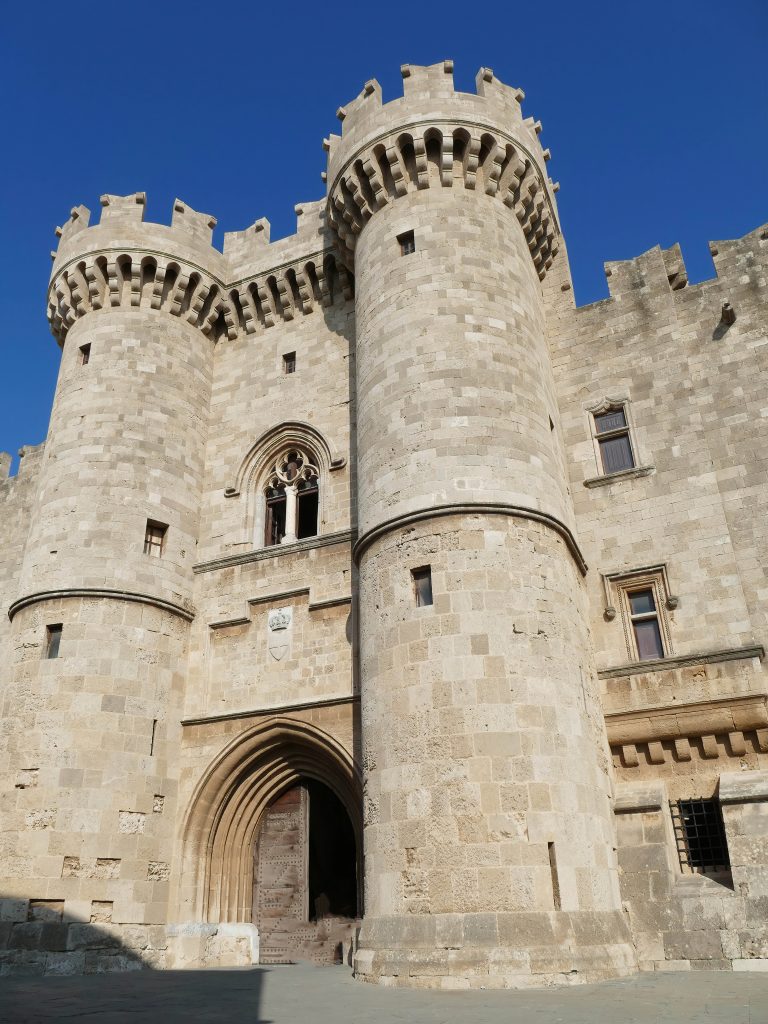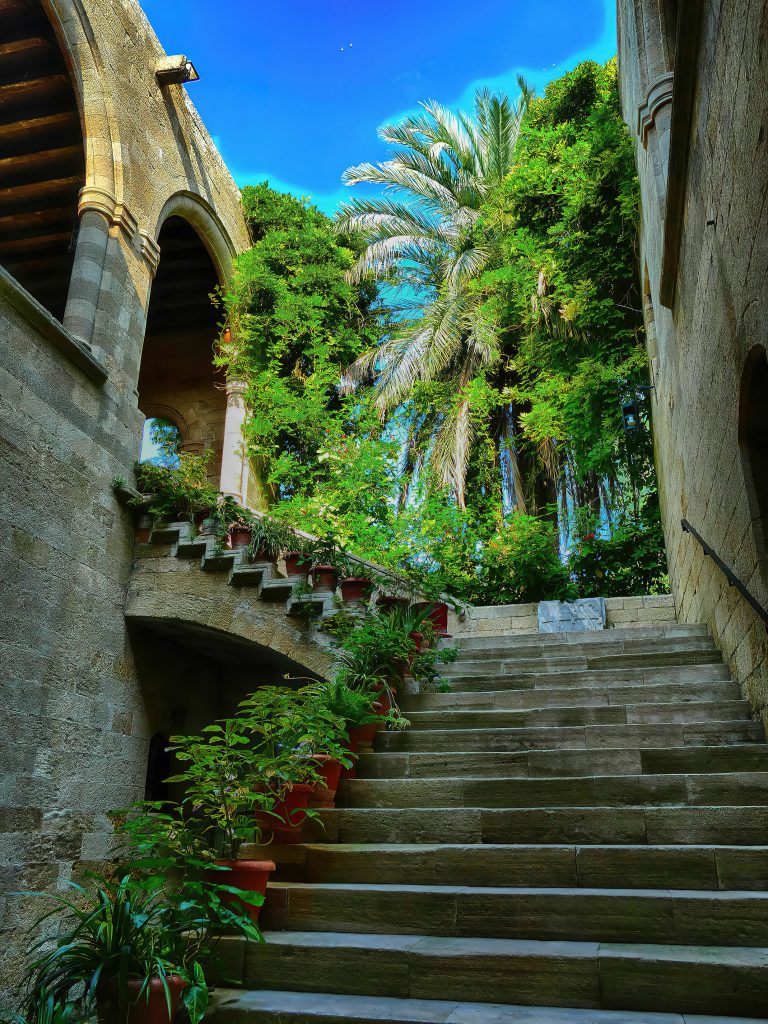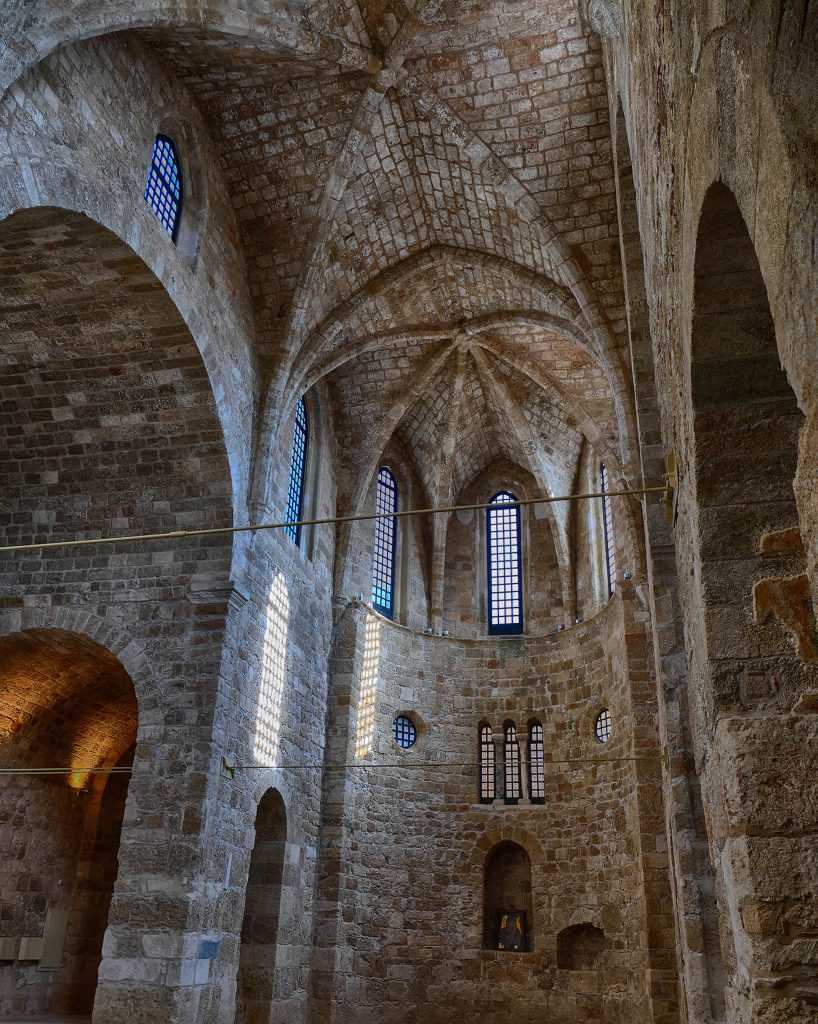Rhodes [Greek: Ρόδος,] is the largest of the Dodecanese islands of Greece and is their historical capital; it is the ninth largest island in the Mediterranean Sea. It has a rich and fascinating history that spans thousands of years. Here’s a brief overview of the history of Rhodes:
Ancient Times:
Rhodes was originally settled by the Minoans from Crete around 1600 BCE. It later came under the influence of the Mycenaeans and then the Dorians.
The island became an important center for trade and maritime activities due to its strategic location between Europe, Asia, and Africa.
In 408 BCE, the city of Rhodes was founded by the Rhodian cities of Lindos, Kamiros, and Ialysos, forming a a major power among the Dodecanese islands (12 islands). There were actually 15 major and a number of smaller islands in the alliance.
Hellenistic Period:
Rhodes gained prominence during the Hellenistic period under the rule of the Ptolemaic dynasty and later the Seleucids. It became known for its maritime power and cultural achievements.
One of the most famous landmarks on Rhodes, the Colossus of Rhodes, a giant statue of the sun god Helios, was erected around 280 BCE at the entrance of the harbor.
Roman and Byzantine Eras:
Rhodes came under Roman rule in 164 BCE and remained an important regional center.
During the Byzantine era, Rhodes faced various invasions and was often targeted by pirates and raiders.
Knights of St. John (Crusader Knights):
In 1309, the island was occupied by the Knights Hospitaller, also known as the Knights of St. John, who fortified the city of Rhodes and established a strong presence.

We dance whene’er we’re able.
We do routines and chorus scenes
With footwork impeccable.
We dine well here in Camelot.
We eat ham and jam and spam a lot.
— Monty Python & the Holy Grail
The Knights successfully defended Rhodes against multiple sieges, including a famous one led by the Ottoman Empire in 1480.
Ottoman Rule:
After a long and fierce siege, the Ottoman Empire captured Rhodes in 1522. The Knights of St. John were allowed to leave the island.
Rhodes remained under Ottoman control for nearly four centuries.
Modern History:
Rhodes, along with the rest of Greece, gained independence from the Ottoman Empire during the Greek War of Independence in the 19th century.
The island was ceded to Italy in 1912 after the Italo-Turkish War and remained under Italian rule until 1943 when it was occupied by German forces during World War II.



After the war, Rhodes was reunited with Greece and has since been a popular tourist destination known for its historical sites, medieval architecture, and beautiful beaches.
From our journals
On the Greek Island of Crete on 9 11 2001
Our first visit to Rhodes:
12 Sep Wednesday Heraclion, Crete to Rhodes After breakfast, stayed in rooms til 11:30 then we drove out to Kasteli, where supposedly there was a weekly market. Turned out to be true, but no one had told us it ends by noon. Beautiful countryside, though with rolling hills covered with grape vines, olive groves, and other agriculture. Good lunch at the Cafe Irida – excellent goat in tomato sauce, taramousalada. Back to Heraclion by about 3 pm, and this time, an easy transfer to Rhodes by plane – 40 minute ride.
Transfer to the Paradise Royal Mare – a large hotel complex, outside the old city. Arrived about 8. Good supper with a wide ranging buffet.
13 Sep Thursday Rhodes – Breakfast about 8:30. Decided to take day trip into the old city of Rodhos – got bus right outside the hotel (500 dks), then had about 15′ ride, getting off just outside the massive 14th century medieval city walls. Entered the town, and went to the Palace of the Grand Masters Externally it’s extremely impressive, with towers and fortifications everywhere. Walls show the strengthening and widening that came in with the use of artillery. Inside, while the palace shows the effects of Mussolini’s imperial design, from the 1920’s, the floors are covered with magnificent mosaics from Kos .

An excellent exhibition in the small museum on medieval Rhodes, covering the knights’ societies, and how people lived at that time. Sugar refinery, trade routes and how they changed from Byzantine times. The history continued thru the 4th crusade (which actually ended when the Crusaders sacked Constantinople, partly to pay their debts to Venice), to the Ottoman takeover in 1522
Sieges
Afterwards, found an internet café. (In days of yore, wifi was unknown and we needed to find an internet cafe and use their computers. Often we would replace kids who were playing video games. security was loose – they even let us insert a thumb drive with our files!) Then back to bus stop to return to the hotel around 3:30 to rest.
14 Sep Friday Rhodes Laid-back breakfast, nice British style bacon & onion omelet. We tried to go to Lindos, and desk clerk said the bus stopped right outside. But after waiting an hour, we gave up & just took the #20 into town instead. Checked email at the Minoan cafe, then went into the old city to see the ‘Byzantine museum’. It was interesting, but not Church of the Virgin of the Castle that had been described in the guides. The building was much more impressive than most of the frescos. Outside, it had pieces from several mosaic floors, and odds & ends of ancient columns. After lunch we wandered around the harbor area, and the old city. Excellent roast lamb ribs, as one of the dinner buffet offerings, meat falling off the bones.
Download royalty-free images of Rhodes
Order prints, greeting cards, clothing, and other merchandise
15 Sep Saturday – Rhodes Another leisurely breakfast, another tasty bacon omelet. Took bus into town to take bus out to Lindos. Still haven’t gotten all the intricacies of the bus system, but we knew this would work. About 1 hour ride out to Lindos. First real culture (or rather tourist) shock of the trip. What a zoo! About a dozen tour buses expelling their loads, others arriving like us on local buses, taxis, or walking from nearby hotels. Everyone moves down the hill to the central plaka of this tiny town. Lindos of today is a warren of whitewashed winding streets hosting souvenir and souvlaki shops, tour agencies and tourist snack stalls, small hotels and tavernas. Few signs (to encourage lost tourists to stop?), but we find our way across the ravine and up the cliff to the acropolis (eschewing the donkey rides). 1200 dks as entry. A spectacular site especially the view from the Byzantine walled castle atop the rocky promontory. It overlooks a beautiful small harbor and bay with a naturally formed jetty-like entrance leading back to a beach. Steep steps lead up thru the fortress walls, coming out on more level spaces. The highest flat spot is devoted to the Temple of Athena Lindia, restored in the 1930’s but now being dismantled (‘reculer pour mieux restorer’? ). Then down the Propylaea and down steps to the partially restored Stoa, and other, Byzantine, structures. Not a lot to see, but the setting is unique and beautiful.
Walked back down in time to get the 1 pm bus back, dropping us off outside the hotel. The bus system is a bit confusing, but the drivers and ticket takers are extremely helpful and friendly. Lunch in the poolside cafeteria – good salad bar/ mezes for $4.
Journal entry: Sep 16 2002 Sunday
Up around 6, allowed in early for breakfast, then picked up by taxi around 7 and down to the ferry terminal. On board, it’s an easy ride -comfortable airplane type chairs and tables but with real leg-room, 3 decks, with adequate air. Luggage stored in a central area, under cover. Good early morning views of the harbor and fortifications, with yachts sailing past. 8:10 sailing, supposedly 50′ catamaran ride, but took nearer 1 1/2 hrs due to rough conditions. Probably 2/3 or more of the passengers were just heading across for the day. So, no big line for visas, though a bit of a wait to get thru passport control.
Some of our other ferry experiences: